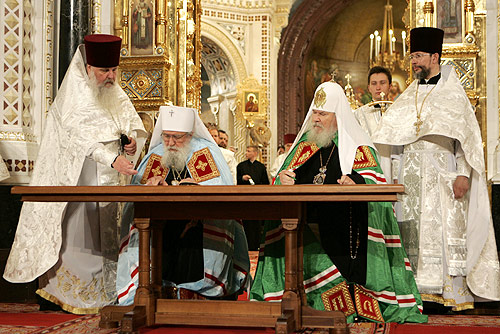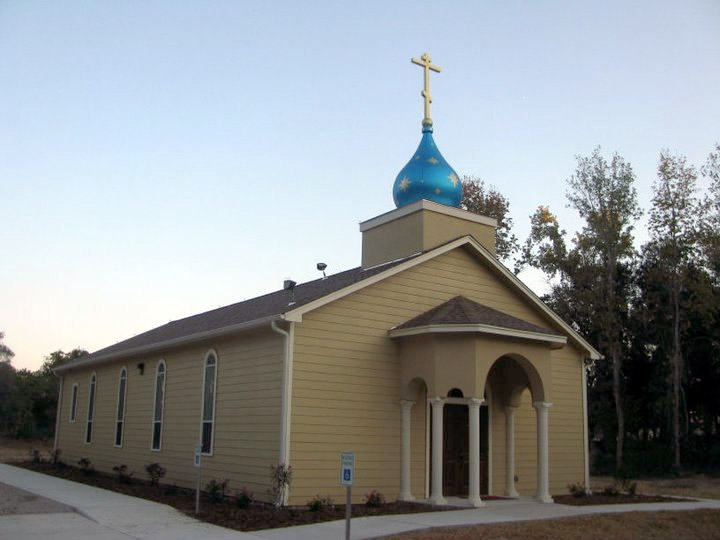
Aaron and Miriam confront Moses about his Ethiopian wife
In the various debates about gay "marriage" that are currently raging, from time to time you have people comparing it to interracial marriage, and some even going so far as to claim that the Bible condemns interracial marriage. This is of course nonsense. Nowhere does the Bible condemn interracial marriage, in fact we find an example of interracial marriage in the life of one of the most important persons in the Bible -- the Prophet Moses.
If you remember the movie the Ten Commandments, you will recall that it begins with Moses coming back in triumph from a campaign against the Ethiopians. You might also recall the Ethiopian princess who seems to rather admire Moses. This was based on Jewish Tradition, which is found in
the Antiquities of the Jews, by the 1st century Jewish historian Josephus. According to
Josephus, Moses actually married this princess, whose name was Tharbis:
"Tharbis was the daughter of the king of the Ethiopians: she happened to see Moses as he led the army near the walls, and fought with great courage; and admiring the subtility of his undertakings, and believing him to be the author of the Egyptians' success, when they had before despaired of recovering their liberty, and to be the occasion of the great danger the Ethiopians were in, when they had before boasted of their great achievements, she fell deeply in love with him; and upon the prevalency of that passion, sent to him the most faithful of all her servants to discourse with him about their marriage. He thereupon accepted the offer, on condition she would procure the delivering up of the city; and gave her the assurance of an oath to take her to his wife; and that when he had once taken possession of the city, he would not break his oath to her. No sooner was the agreement made, but it took effect immediately; and when Moses had cut off the Ethiopians, he gave thanks to God, and consummated his marriage, and led the Egyptians back to their own land" (
Antiquities of the Jews 2:10:2).
None of this is recorded in Scripture, however, we do find mention of Moses' Ethiopian wife in Numbers 12:
"Then Miriam and Aaron spoke against Moses because of the Ethiopian woman whom he had married; for he had married an Ethiopian woman. So they said, “Has the Lord indeed spoken only through Moses? Has He not spoken through us also?” And the Lord heard it. (Now the man Moses was very humble, more than all men who were on the face of the earth.) Suddenly the Lord said to Moses, Aaron, and Miriam, “Come out, you three, to the tabernacle of meeting!” So the three came out. Then the Lord came down in the pillar of cloud and stood in the door of the tabernacle, and called Aaron and Miriam. And they both went forward. Then He said, “Hear now My words: If there is a prophet among you, I, the Lord, make Myself known to him in a vision; I speak to him in a dream. Not so with My servant Moses; he is faithful in all My house. I speak with him face to face, even plainly, and not in dark sayings; and he sees the form of the Lord. Why then were you not afraid to speak against My servant Moses?” So the anger of the Lord was aroused against them, and He departed. And when the cloud departed from above the tabernacle, suddenly Miriam became leprous, as white as snow. Then Aaron turned toward Miriam, and there she was, a leper. So Aaron said to Moses, “Oh, my lord! Please do not lay this sin on us, in which we have done foolishly and in which we have sinned. Please do not let her be as one dead, whose flesh is half consumed when he comes out of his mother’s womb!” So Moses cried out to the Lord, saying, “Please heal her, O God, I pray!” Then the Lord said to Moses, “If her father had but spit in her face, would she not be shamed seven days? Let her be shut out of the camp seven days, and afterward she may be received again.” So Miriam was shut out of the camp seven days, and the people did not journey till Miriam was brought in again. And afterward the people moved from Hazeroth and camped in the Wilderness of Paran."
The only objection found in Scripture is to "foreign wives" who had not converted to the Israelite faith, and so were a snare to their husbands.
So does the Bible condemn interracial marriage? Hardly, it condemns marrying outside of the Faith, but it condemns those who condemn interracial marriages because they are interracial. There are only two races in the Bible: the fallen race of Adam, and the race of Christ.
Update:
St. Ireneaus has this comment:
"Thus, too, did Moses also take to wife an Ethiopian woman, whom he thus made an Israelitish one, showing by anticipation that the wild olive tree is grafted into the cultivated olive, and made to partake of its fatness. For as He who was born Christ according to the flesh, had indeed to be sought after by the people in order to be slain, but was to be set free in Egypt, that is, among the Gentiles, to sanctify those who were there in a state of infancy, from whom also He perfected His Church in that place (for Egypt was Gentile from the beginning, as was Ethiopia also); for this reason, by means of the marriage of Moses, was shown forth the marriage of the Word; and by means of the Ethiopian bride, the Church taken from among the Gentiles was made manifest; and those who do detract from, accuse, and deride it, shall not be pure. For they shall be full of leprosy, and expelled from the camp of the righteous" (Against Heresies, 4:22:12).





